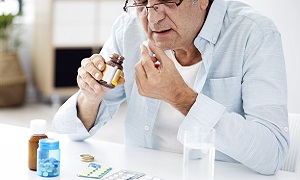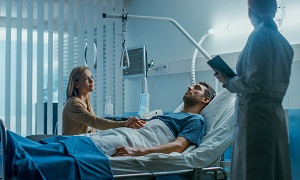Transurethral Resection of the Prostate (TURP)
TURP or Transurethral Resection of the Prostate is a surgical procedure for treating urinary problems arising due to an enlarged prostate. Your doctor will insert a resectoscope through your penis tip into the urethra (the tube carrying urine from your urinary bladder).
It helps your doctor to view and to remove excess prostate tissue responsible for blocking the flow of urine. The procedure is an option for those men who are having moderate to severe urinary problems and aren’t responding to any medications. It is the most effective treatment, to date, for enlarged prostate.
Why do I need a TURP?
The procedure helps to ameliorate urinary symptoms due to Benign Prostatic
Hyperplasia that includes:
- A frequent and urgent need to go & urinate
- Prolonged, slow urination
- Stopping and then starting again while you urinate
- Urinary tract infections
- Difficulty in starting to urinate
- Increased frequency of urination in the night time
- Feeling that the bladder didn’t empty completely
The procedure is also an option when you wish to either prevent or treat complications arising due to blocked urine flow like:
- Bladder or kidney damage
- Bladder stones
- Recurrence of urinary tract infections
- Inability to control urination
- Blood while you urinate
- Inability to urinate
Preparing for the procedure
What to expect?
The surgery will last for around 2 hours. The doctor will administer general anesthesia before the surgery and you will remain unconscious during that time. However, you will remain conscious if the doctor administers spinal anesthesia. You might also need to take antibiotics for preventing the risk of infection.
During the procedure
Your surgeon will insert the resectoscope through the tip of your penis into the prostate area without making any cuts or incisions on your outer body. The resectoscope helps to trim excess tissue from the inner prostate gland, one-piece at a time. The irrigating fluid will carry the small pieces of tissue removed from the inner prostate into the bladder. The doctor will remove all the pieces at the end of the surgery.
After the procedure
You will be in the hospital for about two days after TURP. There will be a urinary catheter because of the swelling blocking the flow of urine. It will remain in place for 48 hours till the swelling subsides and you can urinate without difficulty. You might notice blood in the urine and other irritating urinary symptoms. However, the condition will get better in nearly 2 months and you must immediately contact your surgeon if bleeding is worsening.
Your doctor will ask you to drink plenty of water so that it flushes out the bladder.
Apart from this, other instructions given to you might be:
- Avoiding strenuous activities for 4 to 6 weeks
- Avoiding driving till your doctor removes the catheter and you won’t take medications for pain.
- Eating high-fiber foods to avoid straining during bowel movement and constipation.
- Ask your doctor before you start taking blood thinners.
- Contacting your doctor immediately if you are unable to urinate and/or having a fever.
Results
Risks
- Difficulty in urinating temporarily- You will have trouble urinating for some days after the surgery.
- Erectile dysfunction- Although this is a smaller risk, it is common for all treatments of the prostate.
- Urinary tract infection- It is common after any kind of prostate treatment. There are more chances of the occurrence of infection if the catheter is in place for longer. You might also experience recurrent urinary tract infections.
- Difficulty holding urine- Incontinence (loss of bladder control) is a common complication of TURP.
- Re-treatment- Some men may require re-treatment after TURP because the symptoms don’t subside or don’t improve. Narrowing of the urethra might also be responsible for the need for re-treatment.
- Heavy bleeding- Although rare, some men may experience heavy bleeding and may require a blood transfusion. Most of these men have larger prostate.
- Low sodium in the blood- It happens when the body absorbs excess fluid, during TURP, used go wash the surgery site. This is TURP syndrome which can be life-threatening. However, you may eliminate this condition with Bipolar TURP.


